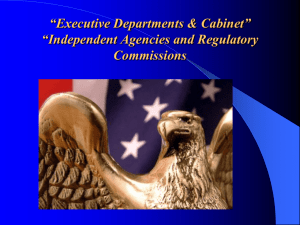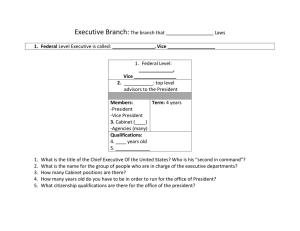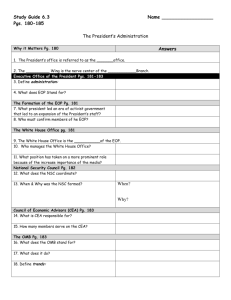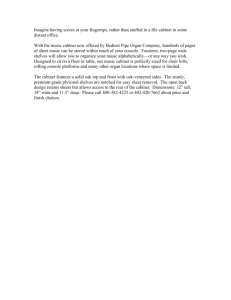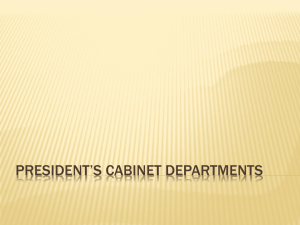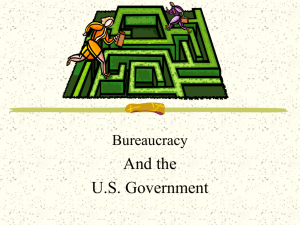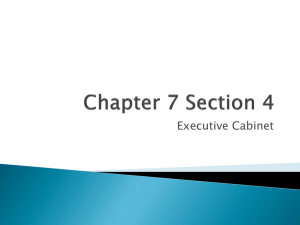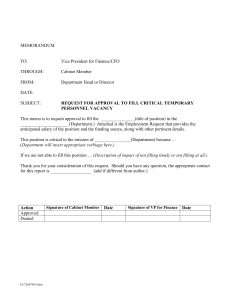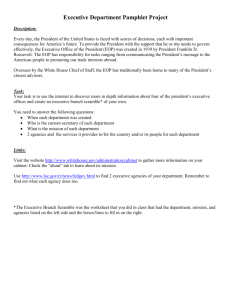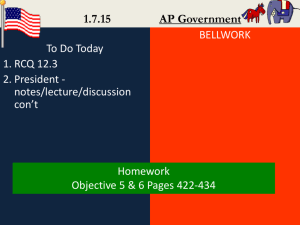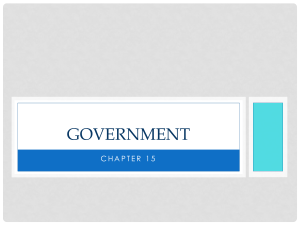15-16 Civics 6.4 Advisers Agencies and
advertisement
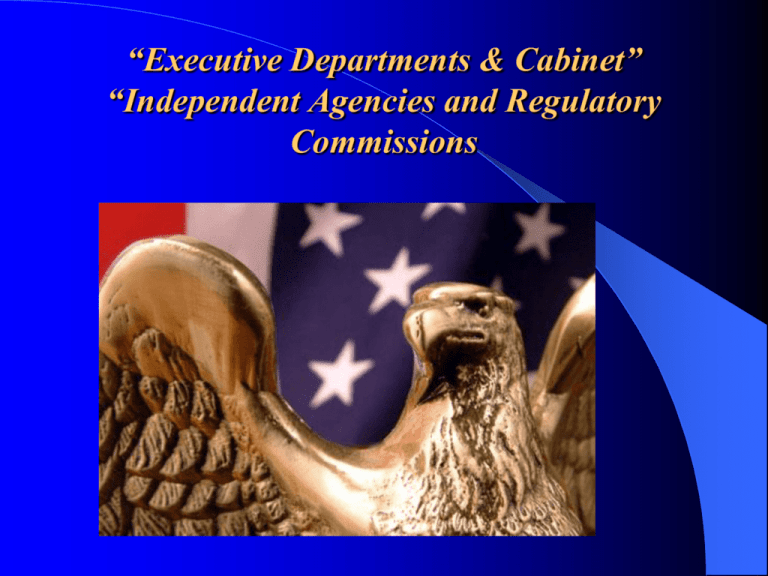
“Executive Departments & Cabinet” “Independent Agencies and Regulatory Commissions Helping the President Helping the President To help the president with all of his/her many tasks, the “Executive Office of the President” (“EOP”) was created in 1939. This includes advisors, clerks, secretaries, and other specialists. The “E.O.P” The “EOP” has approximately 2,000 employees and operates on a budget of over $100 million dollars per year. The “E.O.P” “White House Office” The “White House Office”, also known as the “White House Staff”, has a staff of over 500 people who work directly for the president. It is lead by the “chief of staff”, who is the most powerful member of this staff. This office determines who can see the president and reads most of the reports and letters sent to the president. “Office of Management and Budget” (“OMB”) The “Office of Management and Budget” (“OMB”) helps prepare the president’s budget and helps monitor hundreds of government agencies. “National Security Council” (“NSC”) The “National Security Council” (“NSC”) helps the president coordinate military and foreign policy. This department is made up of : – Vice President – Secretary of State – Secretary of Defense – Joint Chiefs of Staff “National Security Council” (“NSC”) The “Joint Chiefs of Staff” is made up of the top commanders of each branch of the U.S. military. “Office of Administration” The “Office of Administration” assists the president. It’s main task is to help people who request information under the “Freedom of Information Act” “Council of Economic Advisers” (“CEA”) The “Council of Economic Advisers” (“CEA”) helps the president carry out the role of economic leader. “The Cabinet” The “Cabinet” is a group of advisors that include the heads of the 15 executive departments. Department of Homeland Security “The Cabinet” The advisors all carry the title of “secretary”. The only exception is the head of the Department of Justice, who is the Attorney General. “The Cabinet” The newest department to be created was the “Department of Homeland Security” in 2002 (after 9/11) to consolidate our defenses against terrorist attacks “The Cabinet” The main responsibility of the Cabinet is to advise the president on all matters. Although NOT mentioned in the Constitution, every president since Washington has had a Cabinet. The Vice President The vice president has historically had a limited role. Recently, they have been given more responsibilities over the year. The “First Lady” The “First Lady” has no set responsibilities that are listed in the Constitution. Over the years, they have become very active in a variety of issues. The Federal Bureaucracy The Federal Bureaucracy is the name given to the millions of employees (“bureaucrats”) and agencies that help run the U.S. government, turn new laws into action, and regulate the government. Independent Agencies “Executive Agencies” are responsible for specialized areas. – “NASA” is an example. Although not part of the “Cabinet”, these agencies are still accountable to the president. Independent Agencies “Government Corporations” are run like private businesses, but they are NOT for profit The U.S. Postal Service is an example. Independent Agencies “Regulatory Boards and Commissions” have the task of protecting the public. They do NOT report to the president. The “F.C.C.” is an example
